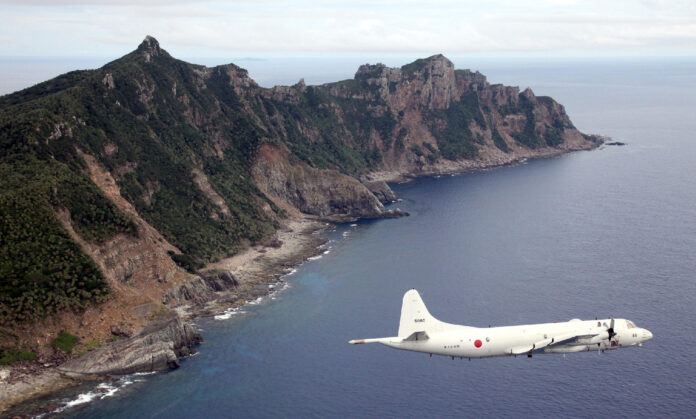Chinese coast guard vessels have reentered waters around a group of islets contested between Beijing and Tokyo for the 96th consecutive day, Japan’s maritime authorities said Tuesday.
Japan’s coast guard said four Chinese vessels were detected in the 24-nautical-mile contiguous zone around the Senkaku Islands, which China claims as the Diaoyu Islands, local news outlet the Sankei Shimbun reported. It appeared to be the same flotilla that sailed into the 12-nautical-mile territorial sea of the Japan-held territory on March 20.
The postwar territorial dispute in the East China Sea has run for decades, but the near-daily maneuvers around the Senkakus have surged in recent years, according to a statistical database maintained by the Japanese government’s maritime law enforcement agency.
Newsweek‘s graphs, depicting both monthly and yearly trends going back over a decade, pinpoint the uptick in pressure in 2019, when Japan said it detected 1,097 Chinese government ships in the island group’s contiguous zone and 126 in its declared territorial waters, up from the previous year’s 615 and 70 ships, respectively.
It was an even more intense spike than in 2012, when China protested the Japanese government’s decision to nationalize the uninhabited islets by increasing the number of vessels it sent in Japan’s claimed maritime zones by a factor of several dozen, according to the data.
The Japanese Foreign Ministry, in a March 1 summary of the situation on its website, said the Chinese coast guard’s ships were attempting to unilaterally “change the status quo by force or coercion” in the waters.
“This includes approaching Japanese fishing vessels inside Japanese territorial waters and intrusions by ships mounted with artillery,” the statement continued.
The Chinese government said the increased patrols around the Senkakus were legal measures used to assert the country’s sovereign rights, which it argued could be traced back centuries, like its claims in the South China Sea.
The moves are often attributed to Beijing’s more assertive posture under Xi Jinping, China’s most powerful leader in a generation.
The tensions have become a bilateral sticking point between the neighbors, but they are also a risk to be managed for the United States, which is treaty-bound to defend Japan should its ally come under attack in the area.
Newsweek contacted the Chinese and Japanese governments for comment by email.
Japan began recording maritime confrontations around the Senkakus in December 2008, when it said Chinese ships “suddenly intruded” its declared territorial waters around the Senkakus.
Today, Japanese and Chinese vessels issue mutual challenges over the radio. The Chinese coast guard, which was merged under a unified command in 2013, then dispatches more ships the next day.
AFP via Getty Images
Tokyo’s data suggests Beijing’s law enforcement ships may continue to set new records in Japan-claimed maritime zones, both for the number of consecutive days spent in the contested waters—157 days in 2021—and for the number of hours they remain anchored there—over 80 hours in 2023.
There seems to be little respite, except on days with poor weather.
Uncommon Knowledge
Newsweek is committed to challenging conventional wisdom and finding connections in the search for common ground.
Newsweek is committed to challenging conventional wisdom and finding connections in the search for common ground.


